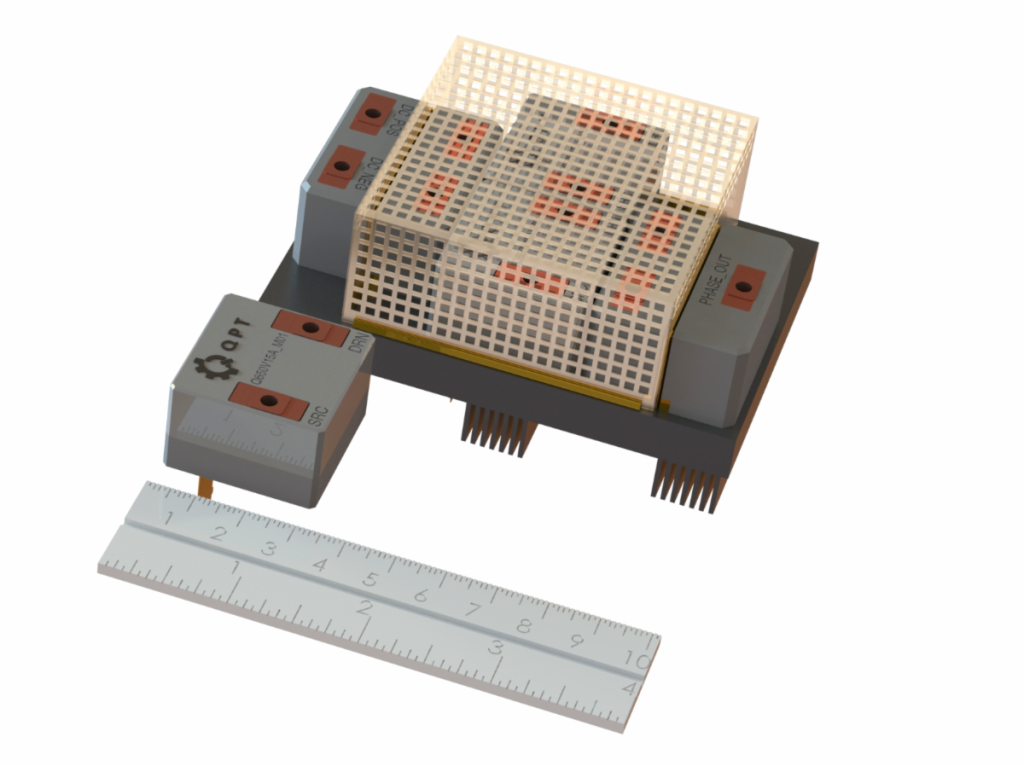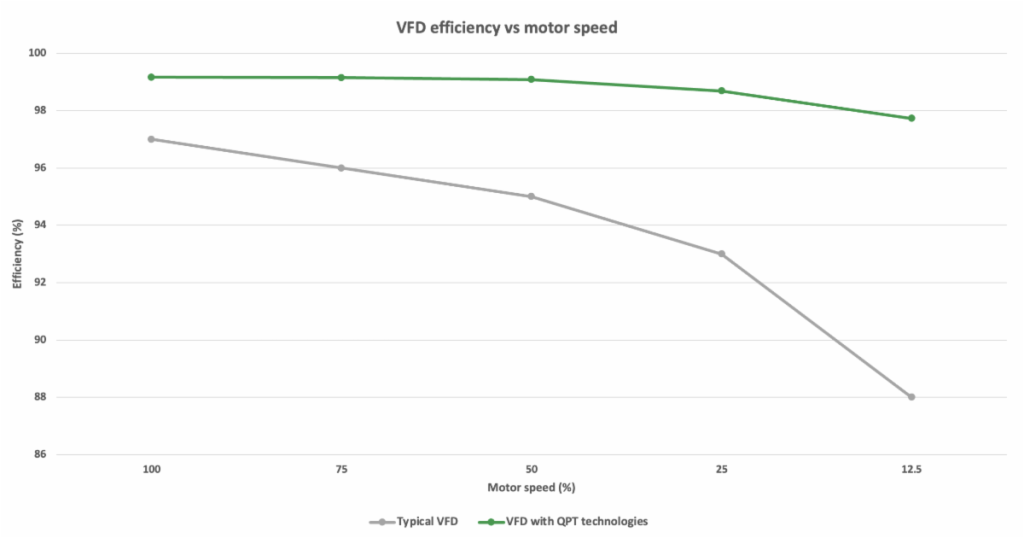Patented set of technologies unleashes GaN to operate at up to 20 MHz for the first time without overheating or RF issues opening up a vast new application area for GaN
QPT Limited, the clean-tech company focussing on improving electrical efficiency, is the first company to create the technologies needed to enable GaN to operate at well over the current limitations of 100 kHz right up to 20 MHz in high power, high voltage applications that use hard switching such as motor drive systems for HVAC, robotics, etc. This disruptive technology opens up this important section of the GaN market that no-one else currently has solutions to address.
The importance of GaN transistors for next generation power electronics is due to their ability of being able to operate at ultrahigh frequencies for switching on and off. A slow transition wastes energy because, during the switching time when the transistor is neither on nor off, it is dissipating huge amounts of power and this results in energy losses and overheating issues. The higher the switching speed, the less time is spent in transition and the less energy is lost. GaN can transition from on to off very quickly at 1-2ns as opposed to 20-50ns for Si and SiC transistors.
However, in high voltage, high power applications, there is a practical limit of 100 kHz for GaN beyond which the issues of overheating and RF interference become too great. The current solution is to throttle GaN back to sub 100 kHz which means that the performance is similar to Silicon Carbide and there are no benefits to using GaN as it is not running at high switching speeds or frequencies where it actually delivers power savings.
Rob Gwynne, QPT’s Founder and CEO, explained, “Power engineers are focused on being an expert in one field and have developed skills and design approaches that work at 10-100Khz switching which is where Si and SiC transistors operate. I was able to look at the problem as an RF engineer and create a solution that enables the GaN transistors to be run at their full potential of up 20 MHz with nanosecond switching to deliver better operational precision without RF interference issues or overheating and thus, for the first time, deliver their promised efficiencies.”

QPT has integrated its technology breakthroughs into two modules so that it can be easily implemented by customers with minimal effort and changes to existing designs. The qGaN module contains a 650V GaN transistor with the company’s qDrive that is the world’s fastest, most accurate, highest resolution, low jitter Isolated GaN Transistor Gate Drive. The second module is qSensor that combines the company’s ZEST and qSense technologies. It provides the sensing and control that enables the GaN to be driven at super high frequencies for the first time.
In addition, QPT has developed its WisperGaN construction system that includes a reference design for how the modules and the ancillary electronics can be assembled together in a Faraday cage so that there are no heating or RF issues. The resulting solution unlocks the ability of GaN to now operate at ultrahigh frequencies and provides up 80% reduction in power usage compared to existing solutions that have to operate at much lower frequencies.
The first qGaN module (Q650V15A-M01) will handle 15A RMS current driving 380V three phase motors. The roadmap will have qGaN modules to handle various different power loads to suit different application area requirements. Together with the other QPT technology modules, turnkey solutions can be easily assembled according to the reference design. The reference design is drop-in replacement for the power stage of existing VFDs without the need for any specialist expertise in EMC or thermal cooling.

“The rest of the existing system such as the microprocessor and software stack stay the same,” explained Rob Gwynne. “This makes upgrading a genuine plug and play solution with the benefits of needing less power so it effectively pays for itself in weeks. In addition, there are further savings as the new BOM is less than existing solutions as it does not require external filters. Companies who want to upgrade from their current silicon solutions to be more power efficient can leapfrog over the hassle of developing a SiC solution in house and simply use our unleashed GaN solution. Combining the VFD power saving of around 80% with the motor usage gives around 10% reduction in overall power usage, which increases in applications where the motor is frequently at low speeds where the current solutions are inefficient.”
The company estimates that the high voltage, high power application markets where its new technology can provide significant power savings has a Total Addressable Market (TAM) of $365 billion. A key segment of that is HVAC and especially heat pumps that are being deployed exponentially around the world so the TAM will continue to increase. Rob Gwynne, concluded, “Electric motors account for 45% of global electricity usage and our technology can make them more efficient and that means less carbon dioxide emissions which helps combat climate changes.”

Variable Frequency Drives (VFDs)
The key application area is in control electronics for motor drives where their high level of efficiency can play a key role in saving energy. Market researchers estimate that 11 billion electric motors are added annually, accounting for 45% of total electrical energy use, so more efficient motor controls could provide significant global energy savings and reductions in CO2 generation.
VFDs work by chopping the incoming power to create a frequency that can be changed to adjust the speed of the motor. Energy is lost every time chopping occurs and, currently, manufacturers believe this to be minimal hence their quoted 97% efficiency figure. However, this figure is at full speed but, in reality, the speed varies and the efficiency drops significantly as the speed drops, which is what happens in a real-world operational cycle and is quietly ignored by manufacturers. It is similar to car manufacturers only quoting fuel usage at the optimal speed and not mentioning the real-world figures of an urban cycle.
To reduce the energy wasted and therefore be more efficient, the chopping needs to be fast, transitioning from off to on or on to off, as quickly as possible. This is because, during the switching time when the transistor is neither on nor off, it is dissipating huge amounts of power, and this accounts for most of the energy losses.
GaN transistors with QPT technology are now capable of running at frequencies of up to 20 MHz to provide ultrafast switching in 1-2 ns, as opposed to 20-50ns for GaN when constrained to under 100KHz to avoid heating and EMC issues. Thus, they are in this high energy loss region for almost no time at all and, consequently, they waste very little energy chopping the DC up into variable frequency AC to drive the motor across the complete range of different speeds.








